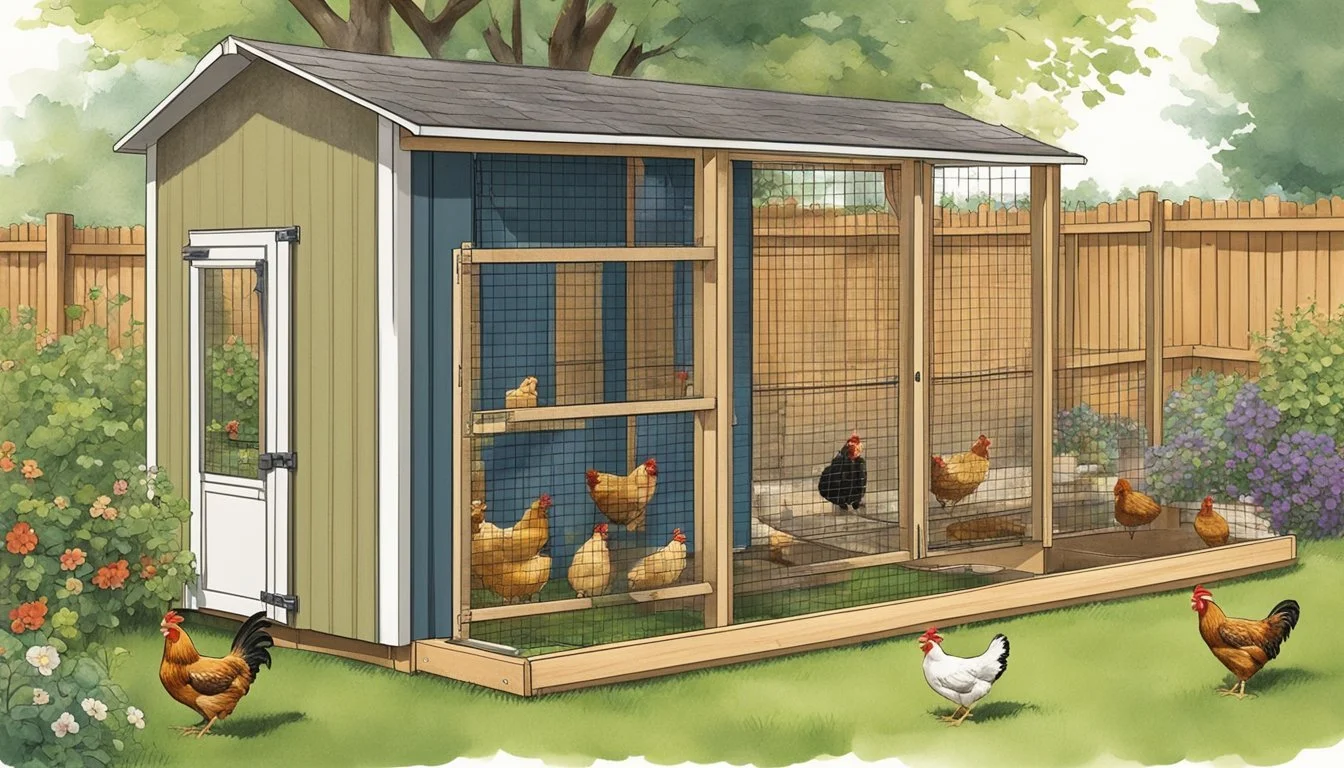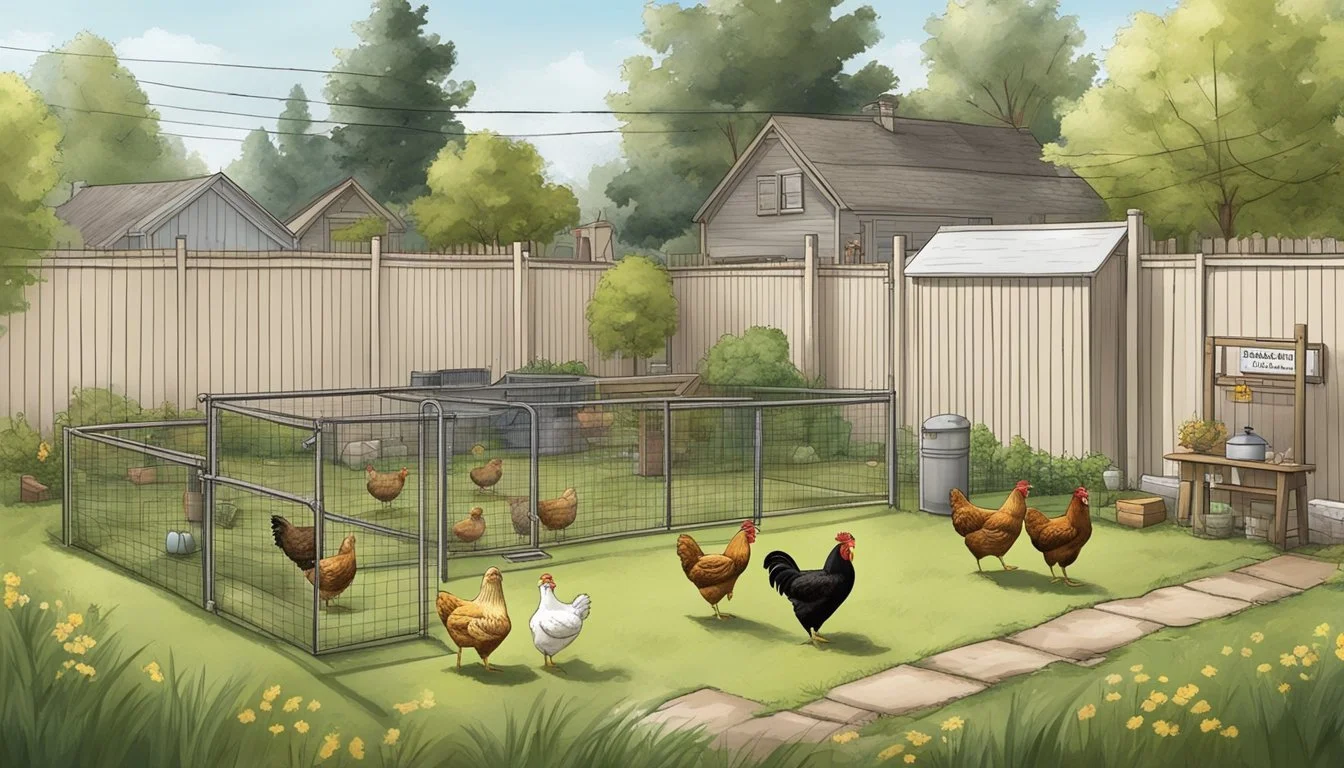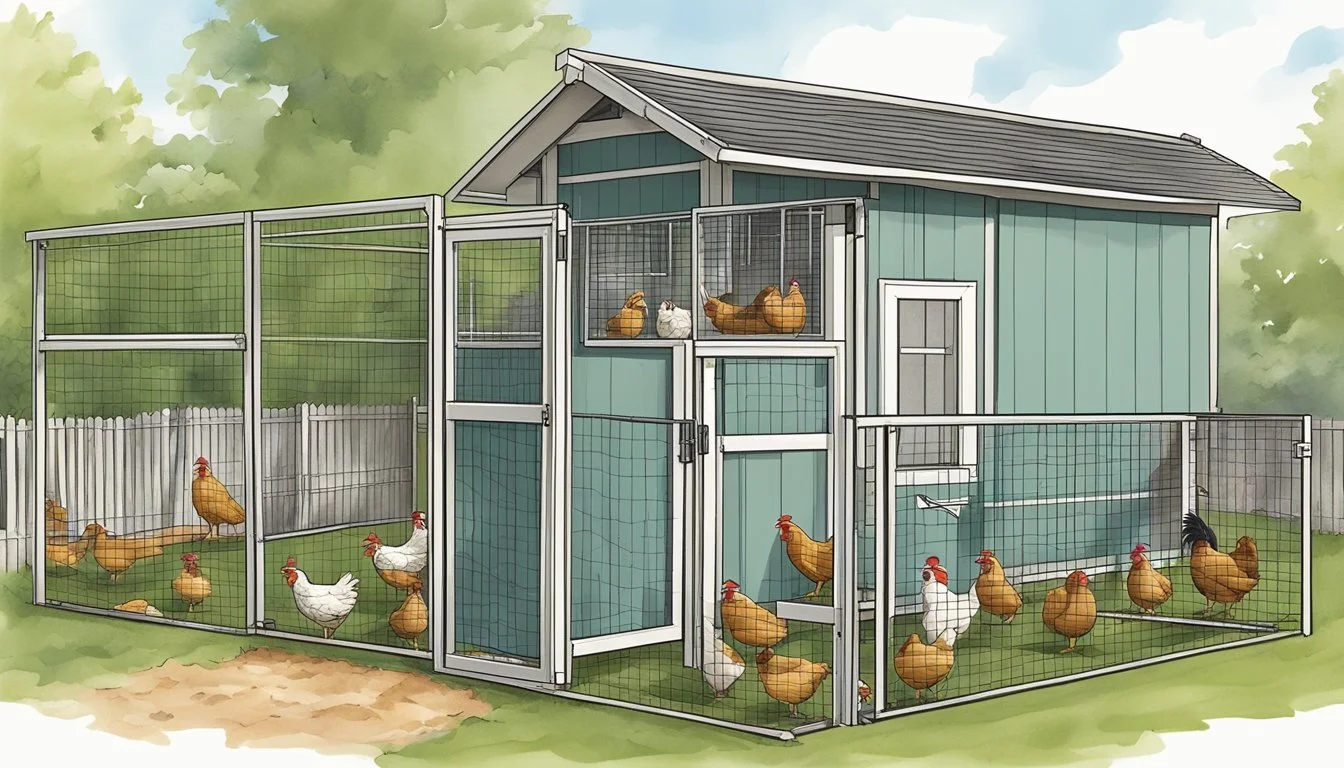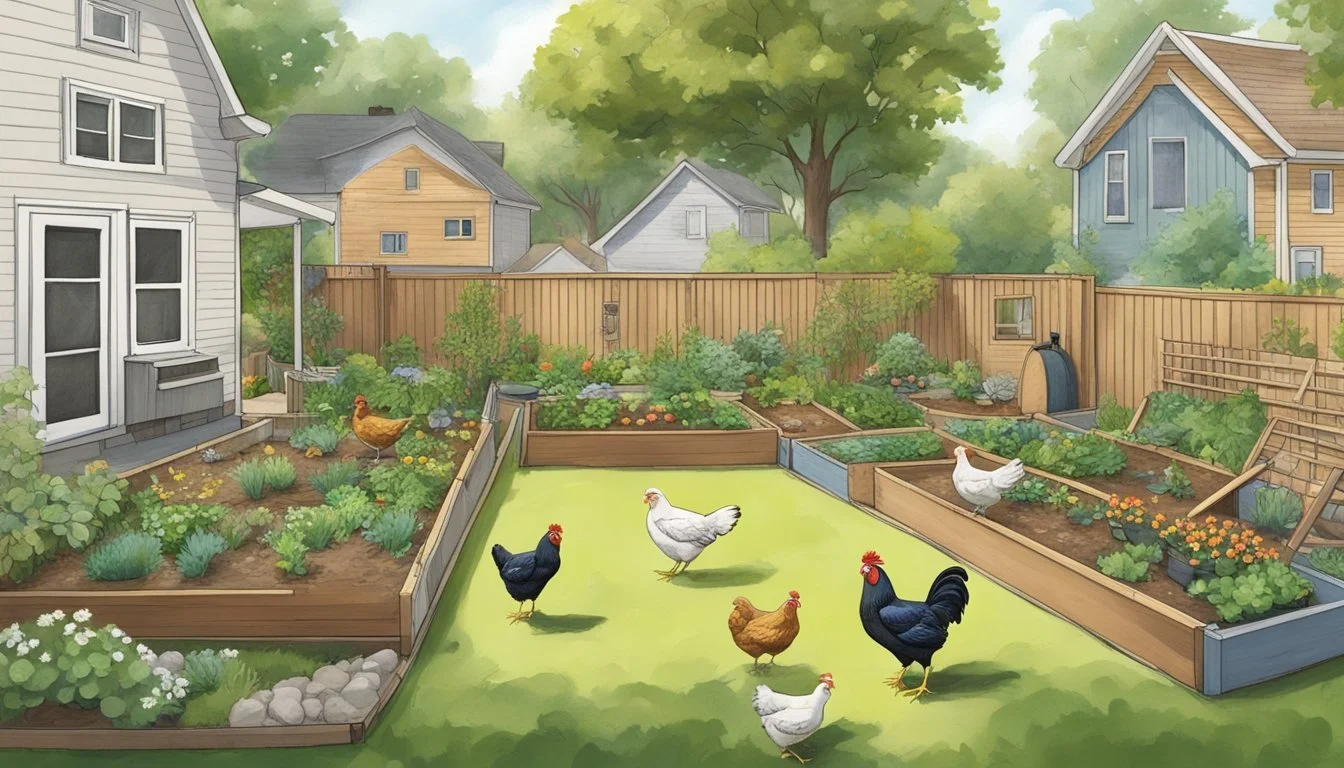Keeping Backyard Chickens in Minneapolis, MN
Essential Guidelines for Urban Poultry Farming
In Minneapolis, MN, the trend of keeping backyard chickens is on the rise, with residents seeking a more sustainable and personal approach to obtaining fresh eggs and meat. The shift towards urban homesteading reflects a broader desire for greener living and closer connections to food sources. City ordinances have evolved to accommodate this growing interest, allowing for the responsible raising of poultry within the city limits. Minneapolis ordinances require residents to obtain a permit for keeping chickens, ensuring both animal welfare and community considerations are met.
Prospective poultry owners must navigate regulations that outline specific guidelines for coop construction, the number of birds allowed, and adherence to noise and nuisance standards. The City of Minneapolis provides two types of permits—Tier One and Tier Two—which vary based on the number of chickens to be kept. These permits not only facilitate lawful poultry keeping but also help maintain public health standards by mandating regular inspections by Animal Control Officers.
The adoption of backyard chickens is more than a hobby; it represents an investment in one's lifestyle and environment. The University of Minnesota Extension offers resources that aid residents in keeping poultry healthy and productive, further solidifying the importance of education in successful urban animal husbandry. As Minneapolitans embrace the practice, they contribute to a larger movement that values self-sufficiency, animal welfare, and community engagement.
Understanding Local Chicken Ordinances
In Minneapolis, the ordinances for keeping backyard chickens are precise, mandating adherence to city-specific regulations, coop requirements, and permit processes.
City-Specific Requirements
Minneapolis residents are allowed to keep chickens on their property, but they must follow certain guidelines. Similarly, in St. Paul, one finds local ordinances tailored for urban poultry farming. This varies across Minnesota cities such as Duluth, Lakeville, Blaine, and Eagan, each with their own set of rules. Cities like Maplewood and Bloomington have also established their ordinances, reflecting a growing consideration for backyard poultry across the county.
Ordinance Particulars for Coops and Space
According to Minneapolis regulations:
Coops and runs must be situated at least 25 feet from neighboring homes.
The construction and positioning of chicken coops must comply with local building codes and zoning requirements.
In St. Paul, for instance, there is a stipulation that the coop must provide a minimum of 5 square feet of space per chicken.
Permit Processes and Zoning Laws
To keep chickens within city limits such as Minneapolis:
A permit is required and must be renewed annually.
80 percent neighbor consent is needed within a 100 feet radius of the resident's property.
In Ramsey County, one must navigate through the zoning laws to ensure compliance.
In other parts of Minnesota, homeowners should always verify with their local government as zoning restrictions may dictate how many chickens one can keep or if there's a need for a permit. Local government offices provide the necessary details for permit applications and any zoning law queries.
Choosing the Right Breed
When considering backyard chickens in Minneapolis, one must focus on breed selection in terms of local climate adaptability and egg or meat production efficiency.
Suitability for Minneapolis Climate
Minneapolis experiences cold winters, so it is crucial to choose chicken breeds that are cold-hardy. Plymouth Rock and Brahma chickens are excellent choices for this environment. They are well-known for their ability to withstand harsh winters. Cochins are also popular for their fluffy feathers, which provide extra insulation against the cold. These breeds not only adapt well to the local climate but also maintain good health and production levels throughout the year.
Egg and Meat Production Capabilities
For those prioritizing egg production, breeds like Leghorns and Rhode Island Reds are prolific layers, with Leghorns known for their large number of white eggs, while Rhode Island Reds lay brown eggs. Here's a quick overview of the egg-laying capabilities of some suitable breeds for Minneapolis:
Brahma: Approximately 150 eggs annually
Leghorn: More than 200 eggs annually
Regarding meat production, backyard chicken keepers might consider Orpingtons or Plymouth Rocks. These breeds are not only suited for cold climates but also provide substantial meat yield, making them a dual-purpose option for owners who are interested in both eggs and meat.
Constructing and Maintaining a Chicken Coop
In Minneapolis, the variable climate and urban predators necessitate well-constructed coops for backyard chickens. Safety, warmth, and hygiene are the primary concerns for coop construction and maintenance.
Design Considerations for Safety and Comfort
A sturdy chicken coop is essential to protect poultry from extreme weather and predators. It should be fully insulated, including the floor, walls, and ceiling, to protect against Minneapolis’s below-zero winter temperatures. Linoleum floors with drains can facilitate cleaning and maintenance. Coops must also include proper fencing to keep neighborhood predators such as dogs and wild animals at bay. Ample ventilation is needed to prevent moisture buildup yet should be designed to prevent cold drafts in winter.
Regular Cleaning and Waste Management
For hygiene and health, regular cleaning of the chicken coop is imperative. Chicken waste should be managed effectively with a cleaning routine that includes the removal of soiled bedding and its replacement. Composting can be a sustainable way to recycle waste and provide nutrient-rich soil for gardens. A proper waste management system will also prevent the spread of pathogens and keep the poultry environment safe and clean.
Feeding and Caring for Your Chickens
Proper nutrition and consistent care are vital for the health of backyard chickens. A well-maintained diet and access to clean water significantly contribute to their overall well-being and productivity.
Nutritional Needs and Feeding Routines
Chickens require a balanced diet rich in vitamins, minerals, and protein. An adult laying hen, for instance, generally consumes about 3 pounds of feed each week. The typical feed for chickens includes grains, fruits, vegetables, and sometimes insects, which provide a varied and nutritious diet.
Daily Feeding Routine:
Morning: Provide a portion of complete feed to ensure energy levels throughout the day.
Afternoon: Offer a mix of grains or other treats and inspect any leftover food.
Evening: Remove unwanted feed to prevent attracting pests overnight.
To support egg production, laying hens should have a constant supply of crushed oyster shell for calcium and grit to help with digestion.
Water Supply and Its Importance
Chickens need continuous access to clean water. Water intake is crucial for their health, as it aids in digestion, regulates body temperature, and is necessary for egg production.
Maintaining Water Supply:
Clean and refill water containers daily to avoid the spread of diseases.
During winter, ensure water does not freeze using heaters or by changing water more frequently.
In summer, provide shade over the water containers to keep the water cool.
By meeting these dietary and hydration needs, owners can ensure the health and productivity of their backyard chickens in Minneapolis, MN.
Health and Biosecurity
Maintaining the health of backyard chickens in Minneapolis requires vigilance to prevent diseases and execute proper biosecurity measures. Key to this effort is understanding and implementing strategies that protect poultry from parasites, bacteria, and viral threats like avian influenza.
Preventing Diseases and Parasites
Common Diseases and Parasites:
Avian Influenza
Salmonella
Lice and mites
Signs and Symptoms to watch for include:
Respiratory distress
Diarrhea
Unusual lethargy
Decrease in egg production
Treatment options vary based on the disease but may include:
Veterinary-prescribed antibiotics for bacterial infections
Parasite-specific medications
Vaccinations, where available
Preventative measures are crucial and include:
Regularly cleaning and disinfecting the coop
Providing a well-balanced diet and clean water
Quarantining new birds before introducing them to the flock
Biosecurity Measures in Your Backyard
Creating a Biosecurity Plan:
A biosecurity plan tailored for individual farm needs should include:
Controlled access to poultry areas to avoid contamination
Disinfection protocols for equipment and people entering the coop
Best Practices for biosecurity in small-scale poultry operations:
Regularly clean and disinfect coops and feeders
Limit visitor access to poultry areas
Monitor flock health daily
Isolate and treat sick birds promptly
Dealing with Highly Pathogenic Agents:
In the event of an outbreak of highly pathogenic avian influenza (HPAI), immediate reporting to the Minnesota Board of Animal Health is crucial for timely containment and guidance on handling infected and exposed birds.
By adhering to these health and biosecurity guidelines, poultry keepers in Minneapolis can improve the welfare of their backyard flocks and mitigate risks associated with poultry diseases and infections.
Legal Aspects of Raising Chickens
Raising backyard chickens in Minneapolis involves understanding local laws, obtaining necessary permits, and being aware of regulations including slaughtering practices and the consequences of non-compliance.
Slaughtering Regulations
In Minneapolis, slaughtering chickens is subject to city regulations. Residents are required to perform the act humanely and out of the view of the public to avoid distress to neighbors and passersby. All waste must be disposed of properly to maintain sanitation and prevent attracting pests.
Understanding Fines and Penalties
The City of Minneapolis outlines specific fines and penalties for violations of chicken regulations. These can include, but are not limited to:
Failure to Obtain a Permit: Operating without the city-issued permit for keeping chickens can result in a fine.
Exceeding Hen Limits or Keeping Roosters: Owning more than six hens or any number of roosters without a permit may incur fines.
Creating Nuisances: If chickens cause excessive noise, odors, or unsanitary conditions that disturb the neighborhood, fines can be levied against the homeowner.
Homeowners interested in raising chickens are advised to review Minneapolis Animal Care and Control regulations to ensure they meet all legal criteria and avoid penalties.
Community Engagement and Education
The integration of backyard chickens in Minneapolis has not only fostered a sense of community but has also created a breadth of educational opportunities. This section delves into how urban poultry imparts benefits to local communities and serves as an educational tool for all ages.
Benefits of Urban Poultry to Communities
Urban poultry, particularly the keeping of backyard chickens in the Twin Cities, offers numerous community benefits. Notably, these benefits include:
Sustainability and Local Food Production: Residents gain access to fresh eggs, reducing reliance on store-bought options and promoting the local food movement.
Community Bonding: Chicken keeping fosters community interactions as neighbors connect over shared interests and exchange tips and resources.
Small-scale poultry can also be a stepping stone for urban residents to engage with more extensive food production and sustainability practices.
Educational Opportunities for Children and Adults
Backyard chickens provide abundant educational prospects for both children and adults in Minneapolis. These opportunities span several areas:
Hands-on Learning for Children: Programs like the 4-H Coop encourage children to learn about animal husbandry, responsibility, and the cycle of food production.
Adult Enrichment:
Workshops and classes facilitate continued learning about poultry care, benefits, and challenges specific to an urban setting.
Certification programs prepare residents for the responsible keeping of chickens and compliance with local regulations.
Through engaging with backyard poultry, children and adults in the Minneapolis area not only gain practical skills but also contribute to a sustainable local ecosystem.
Protecting Chickens from Predators
Ensuring the safety of backyard chickens in Minneapolis requires awareness of local predators and the deployment of protective strategies. Properly constructed coops and a clear understanding of the urban wildlife are essential for safeguarding poultry.
Common Urban Predators
In Minneapolis, backyard chickens may face threats from various urban predators such as:
Foxes: Highly adaptable, foxes are known for their cunning nature.
Hawks: Avian predators that can swoop down unexpectedly to snatch chickens.
Owls: Nocturnal hunters posing a risk to chickens left unsecured at night.
Coyotes: Canine predators that can breach enclosures if not properly secured.
Raccoons: Known for their dexterity, they can manipulate simple locks and latches.
Possums: Opportunistic feeders that can prey on small animals and eggs.
Cats: Both domestic and feral cats might attack smaller poultry or chicks.
Rodents: Rats and mice can be a problem by gnawing on coops and eating feed.
Implementing Effective Protection Strategies
A robust defense tactic includes both coop fortification and environmental management.
Coop Design: Structures need to be sturdy with hardware cloth instead of chicken wire, as it's more resistant to predators. It should be buried at least 12-18 inches underground in an "L" or "J" shape to deter digging.
Locks and Closures: All doors and openings should be secured with predator-proof locks that raccoons and other intelligent animals cannot open.
Habitat Management: Remove any heavy brush or tall grasses where predators may hide and ensure that food sources such as garbage or compost are inaccessible to deter unwanted visitors.
Regular Checks: Daily inspections of fences and coop integrity help to catch any potential entry points early.
By adopting these focused protective measures, owners can enhance the safety of their backyard chickens against Minneapolis' common urban predators.
Best Practices for Handling Chickens
When keeping backyard chickens, maintaining robust handling practices is crucial both for the welfare of the birds and the health of the handlers. These guidelines ensure that both the chickens and those caring for them remain free from injury and infection.
Minimizing Risks of Infection
One should always be cautious to minimize the risk of infection when interacting with chickens. Chickens can carry Salmonella, a bacteria that can be transferred to humans through direct or indirect contact with live poultry or their environment.
Hand Washing: Handlers must wash their hands thoroughly with soap and water immediately after touching chickens or any objects in the areas where they live and roam.
Safe Handling: It is imperative to avoid eating or drinking around the chickens, as well as refraining from kissing or cuddling the birds, to prevent the spread of germs.
Children under five years of age should have limited access to chicken areas and should always be supervised to ensure they do not put their hands or objects in their mouths after handling chickens or chicken equipment.
Hygiene Protocols for You and Your Family
Hygiene protocols are necessary to ensure that human contact with backyard chickens doesn't lead to the spread of infections within the family unit.
Designated Clothing: Family members should have specific clothes and shoes for chicken care, which are not worn into the house.
Managing Droppings: Droppings should be handled with care. Use gloves when cleaning coops and dispose of waste properly. Keeping the coop clean will also minimize the risk of chickens stepping in and spreading droppings.
By incorporating these daily hygiene practices into their routine when interacting with backyard chickens, individuals and their families can enjoy the experience of poultry-keeping while keeping the risks at bay.
Raising Chicks to Hens
Raising backyard chickens in Minneapolis starts with understanding the needs of young poultry and continues through the various stages of their growth. Proper care and knowledge are crucial for transitioning chicks into productive hens.
Caring for Young Poultry
When raising chicks, it's essential to provide the correct environment and nutrition. Brooding is the initial stage where chicks require a warm space, usually kept at 95 degrees Fahrenheit during their first week and decreased by 5 degrees weekly until they are ready to acclimate to outside temperatures. Adequate lighting and space are critical, with about 2-3 square feet per chick to encourage growth and prevent overcrowding.
Chicks need starter feed, a high-protein diet necessary for their rapid development during the first 6-8 weeks. Clean water must be available at all times, and feeders should be filled with fresh food to avoid contamination and illness.
Understanding Growth Stages
Chicks grow rapidly, and their care requirements change as they develop through various stages. From hatch to 6 weeks, they are considered chicks and are most vulnerable, requiring constant temperature control and protection from predators.
From 6 weeks to about 5 months, chickens are called pullets (for females) and cockerels (for males). Hens will typically begin laying eggs around the 6-month mark, reaching peak production in the first two years and potentially laying for 5 to 10 years.
In Minneapolis, residents can keep up to 6 hens per lot, according to local ordinances, and ensuring proper care throughout these stages helps maintain a healthy flock and consistent egg production.
The Economics of Backyard Chickens
In Minneapolis, MN, the decision to raise backyard chickens involves an evaluation of costs against potential benefits. Those considering this venture should understand the immediate financial commitment and appreciate any long-term economic effects on household food sustainability.
Costs vs. Benefits Analysis
Initial Costs:
Coop Construction: Costs can range from minimal (using scrap lumber) to over $1,000 for a high-end kit.
Chickens: The price for purchasing laying hens varies based on breed and age.
Feed: Organic feed prices are higher than conventional options, affecting long-term budgeting.
Recurring Expenses:
Feed and Water: Monthly expenses depend on flock size and type of feed used.
Healthcare and Maintenance: Occasional vet bills and coop upkeep add to the overall cost.
Table 1: Cost Overview
Expense Type Estimated Cost Range Coop Construction $0 - $1,000+ Chickens Varies by breed and age Feed Subject to market rates Healthcare Variable
Benefits:
Egg Production: Fresh eggs can offset grocery bills with daily supply from your flock.
Food Security: Having a personal supply aids against market shortages.
Table 2: Benefit Overview
Benefit Type Value Proposition Egg Production Offset of grocery expenses Food Security Mitigation of dependency on store-bought eggs
Sustainability and Long-Term Planning
Environmental Benefits:
Raising chickens reduces the carbon footprint by limiting transportation and packaging associated with store-bought eggs.
Long-Term Economic Benefits:
Home-raised chickens can produce eggs for several years, reducing long-term dependency on store purchases.
Chickens can contribute to a sustainable cycle by providing natural fertilizer for home gardens.
Considerations:
Future expenses for replacing aging hens should be factored into the economic projection.
The balance of initial investment against long-term savings is influenced by the lifespan of the chickens and the productivity of the flock.
In summary, the decision to keep backyard chickens in Minneapolis includes upfront costs and ongoing care investments. When weighed against the benefits of having a steady supply of fresh eggs and increased food security, individuals can determine if it aligns with their economic and sustainability goals.












